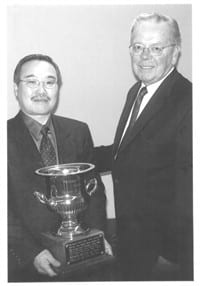What Are the Top Five Vegetables? The ’Healthy Mom’ Reveals Which Veggies Should Make Your Table
We all know we need to eat our veggies, especially with the new wave of processed-food companies touting how their sauces and canned pastas now contain a full day’s allotment of vegetables — but Iva Young thinks that’s just a bit deceiving.
“It’s a tricky definition of terms,” said Young, author of Healthy Mom. “It’s really not as healthy to eat processed foods to begin with, but for them to say that using vegetables as fillers somehow makes processed foods healthy is disingenuous at best. It’s like saying, ’don’t pay attention to all the chemicals, dyes, and sodium we put in the can — there’s vegetables in there, too, so that makes it all OK!’”
Young believes that people need to eat actual vegetables if they want to have a healthy diet, and five key veggies top her list as the healthiest. They include:
Spinach. Popeye was right. Spinach is an excellent source of vitamin K, vitamin A, manganese, folate, magnesium, iron, vitamin C, vitamin B2, calcium, potassium, and vitamin B6. It’s also a good source of fiber, copper, protein, phosphorous, zinc, vitamin E, omega 3 fatty acids, niacin, and antioxidants.
Lettuce. Lettuce, particularly greenleaf, red leaf, and romaine, is a low-calorie fiber food that is also a great place to find vitamin A, folic acid, lactucarium (which helps enhance calmness and pain relief), as well as the antioxidants lutein and zeaxanthin. Lettuce also contains a good amount of anti-cancer properties.
Broccoli. Besides having great flavor and texture, broccoli contains copious amounts of vitamin A, vitamin C, beta carotene, and vitamin K. The minerals in broccoli include calcium, potassium, iron, and folate. A great source of fiber, broccoli also provides lots of bioflavonoids, which is an antioxidant that helps protect against cancer and heart disease.
Brussels sprouts. A staple in the diets of Asian cultures, who are among the longest-lived people in the world, the crunchy garnish contains lots of potassium, vitamin C, vitamin A, beta carotene, and vitamin K. This is another great anti-cancer vegetable.
Cabbage. Although best-known as the partner of corned beef on St. Patrick’s Day, cabbage is a great, low-calorie food that contains a good amount of fiber, calcium, and vitamin C. Cabbage is incredibly packed with substantial anti-cancer agents.
When picking vegetables, Young believes that fresh and frozen vegetables are better than canned vegetables because they have less added salt. If you have to buy canned vegetables, she recommends draining the water they are packed in before preparing them to remove a good amount of the added sodium, or simply buy those veggies labeled as having low sodium.
“Broccoli, cabbage, and brussels sprouts also contain glucosinolates, which are known for their chemoprotective agents against chemically-induced carcinogens by blocking the initiation of tumors in the liver, colon, breasts, and pancreas,” she added. “These anti-cancer compounds are released more effectively when you chop those vegetables before serving, and serving them raw increases the anti-cancer benefits even more.”
With all that said, Young has found in her research that “the vitamin numbers go up when vegetables are cooked, but the anti-cancer compounds go down.” She suggests “steaming or roasting on a pan for no more than 7 minutes, which has proven to be a good way to keep the anti-cancer compounds and make it more edible.” v
Iva Young was born in Munich, Germany, and her family moved to Toronto, Canada, when she was 2 years old. Her parents grew up in Croatia, so she grew up eating traditional high-fat Croatian and German meals. That upbringing helped spark her passion for nutrition and natural health. She holds a bachelor’s degree with an emphasis in Kinesiology and Health Promotion from California Polytechnic University. Russ Handler is print campaign manager for News and Experts in Clearwater, Fla.;www.newsandexperts.com


Comments are closed.